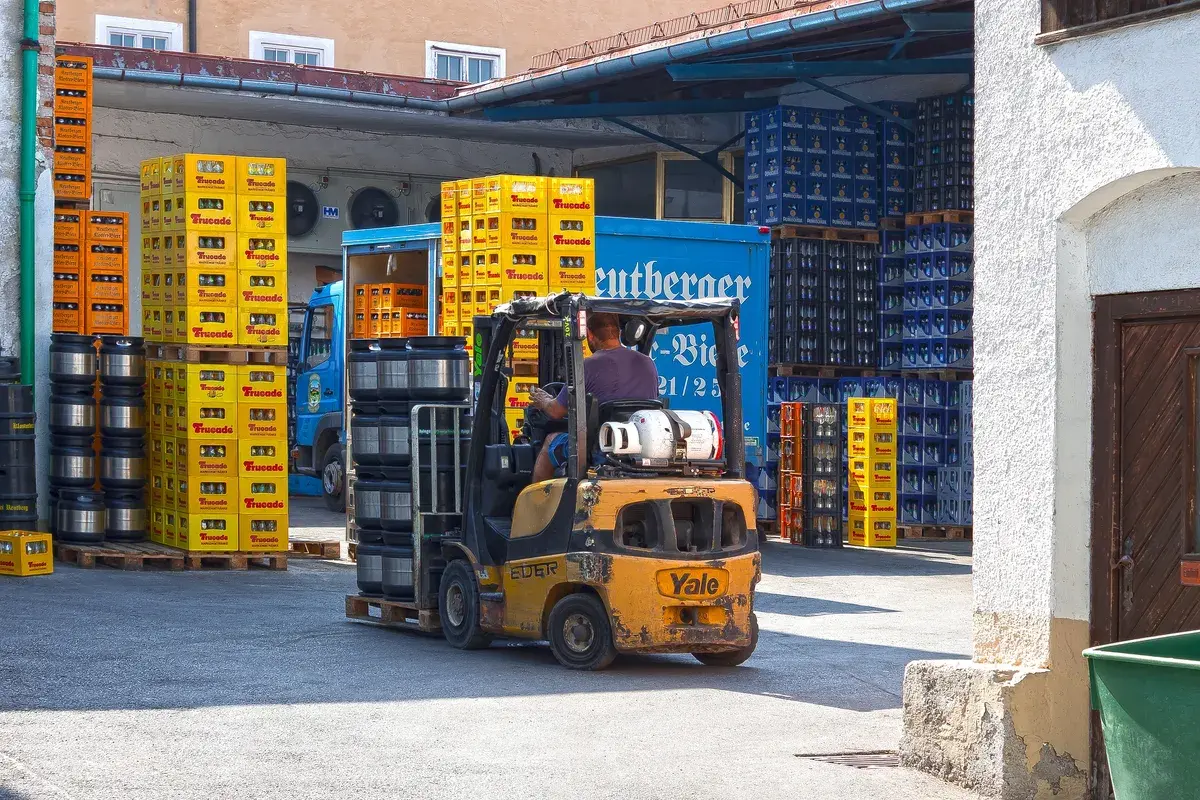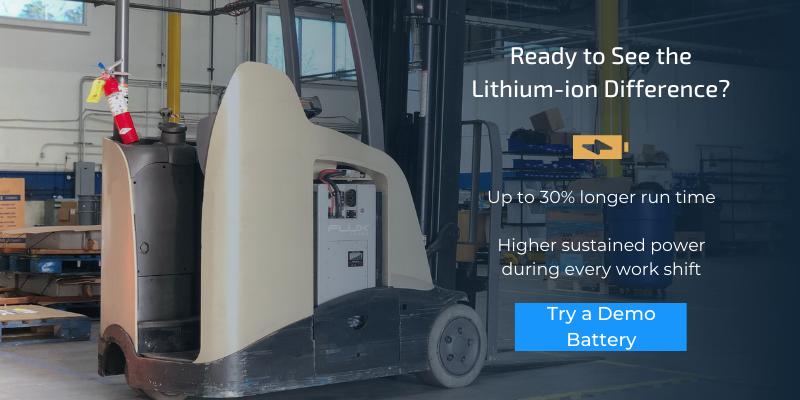Why It’s the Perfect Time for Electrification
The future is electric, with the uptake of electric vehicles (EVs) and new lithium-ion battery technologies constantly emerging. The material handling industry is no exception.
As soon as 2030, petrol and diesel engine vehicles will no longer be available in certain countries such as France, the UK, Germany, and Canada. In the US, states like California are evaluating bans on gas-powered vehicles. As countries start implementing the ban on diesel engine vehicles, there is also a concern about a ban of IC-powered equipment in manufacturing facilities as well. Many manufacturers must consider their options now and identify alternatives when the regulation comes in.
According to the Industrial Truck Association (ITA), internal combustion (IC) engine forklifts being purchased every year have decreased from 77,588 in 2019 to 61,161 IC forklift purchases in 2020. As internal combustion forklift purchase decreases the electric forklift market increase every year. In 2019, 144,861 electric-powered equipment was purchased. While in 2020, 135,163 electric-powered equipment was purchased, showing that electrification become a primary source of power.
How to Prepare for Electrification
Preparing a forklift fleet for electrification takes some time in planning and organization. You will need to decide what type of electric equipment you will need, and which OEM brand is the right fit for your operations. As you decide what type of electric equipment is needed for your operations, you must also consider other factors as well.
There are three steps to preparing your fleet for electrification:
- Deciding which batteries are best for you
- Planning facilities/infrastructure setup
- Training and safety
- Decide Which Type of Electric Forklift Battery Is Best for You
If you rely on forklifts to keep products going out the door, you know how important it is to supply your fleet with the right power.
When it comes to electric forklifts, the two types of batteries most often preferred are lead acid and lithium-ion. Choosing between the two is an important decision that can affect your company’s efficiency and bottom line.
Whether it is an entire fleet, or just a single forklift, deciding which type of forklift battery to purchase can be difficult. If you have been using internal combustion forklifts for years, switching to lithium-ion technology requires a lot of decision making such as what voltage, capacity, size of the battery, charge rates, and more to ensure your operations are getting a return on your investment. After all, forklift batteries are an investment that directly impacts your daily operations.
For some, selecting lithium-ion or lead acid batteries is based primarily on the purchase price. But there is much more you should look for in a battery when determining which is best for your operation.
There are some substantial differences between lead acid batteries and lithium-ion battery packs, such as:
Energy efficiency
- Lead acid batteries lose capacity when they are charging, discharging, and also when they are just sitting idling. Their voltage drops at an increasing rate once they start discharging, so forklifts can get sluggish as the shift goes on.
- Lithium-ion batteries maintain a constant voltage throughout the discharge cycle - leading to as much as 50% energy savings compared with a lead acid battery.
Cycle life
- Lead acid batteries have a cycle life that averages between 1,000 and 1,500 cycles.
- On the other hand, lithium-ion batteries have a cycle life of between 2,000 and 3,000 cycles. Depending on the application and maintenance, this means lithium-ion batteries will typically last 2-3X as long as a comparable lead acid battery.
Safety
- Lead acid batteries use toxic lead and sulfuric acid, which naturally produce heat while charging. Toxic fumes are emitted when heat is generated. Ensuring there is a ventilated charging space for lead acid batteries is essential for the safety of warehouse employees.
- Lithium-ion battery packs are sealed, keeping all the materials from escaping the enclosure. Because lithium-ion battery packs are enclosed, there is no need for a dedicated, ventilated charging space.
- Plan the Facility Setup & Storage Logistics
Plan your charging bays. This is a necessary step to set up your facility in the most efficient way for your operations. Depending on the type of battery you choose, you might need to plan for a ventilated battery charging and changing area. Because lead acid batteries produce toxic fumes, having a dedicated room with a ventilation system is crucial to the safety of the warehouse. A ventilated charging room is one primary downfall to lead acid batteries.
This step can be skipped with lithium-ion battery packs because this technology does not require a ventilated space for charging. Lithium-ion battery packs can use a charging station located anywhere in the warehouse because they don’t need to be removed from the forklift to charge.
Lithium-ion batteries provide excellent ROI because they can easily be opportunity charged almost anywhere in your facility. Lithium-ion batteries don’t need to be lifted out of the equipment, unlike their lead acid counterparts, to be charged. They also don’t require separate storage areas because they do not contain and emit the same hazardous chemicals that lead acid batteries can.
- Workforce Training & Regular Inspections
Training your workforce and conducting regular forklift inspections may seem obvious, but it's a very important step. Never shortcut this requirement. Regardless of what power source your operations use for their forklifts, safety training and regular inspections are required by OSHA to prevent hazards in the workplace. Through certification, operators learn safe ways to load and unload forklifts, move and stack pallets or loads properly, maintain their equipment, and operate the forklift.
Internal combustion engine training will look different than lithium-ion battery training because the maintenance for these power sources varies in different ways.
A part of training internal combustion engine operators is teaching them how to properly swap out propane canisters. As well as learning the proper steps in handling propane, operators must learn to conduct regular inspections of the equipment to minimize the risk of propane leaks or malfunctions.
As for lithium-ion battery packs, types of training that must occur for forklift operators include:
- Opportunity charging during breaks – training operators on the practice of charging during breaks will help maximize the battery’s cycle life
- Handling the battery pack
- Handling the charge cables – ensure that they follow the manufacturer’s process for safely charging the battery packs
Training forklift battery operators on these types of measures can prevent issues that might void the battery warranty.
Check out this Forklift Operator Checklist for even more details.
The Right Lithium-ion Battery Supplier Will Ensure A Successful Transition
Electrifying fleets take a lot of planning and education to ensure a successful transition. Understanding your operations and the requirements for an electric forklift will help in the long run.
When planning your transition to lithium-ion battery packs, make sure you take some time to prepare your fleet for electrification with these three steps:
- Deciding which batteries are best for you
- Planning facilities/infrastructure setup
- Training and safety
The right lithium-ion battery supplier will help you plan your fleet electrification and walk with you every step of the way.












